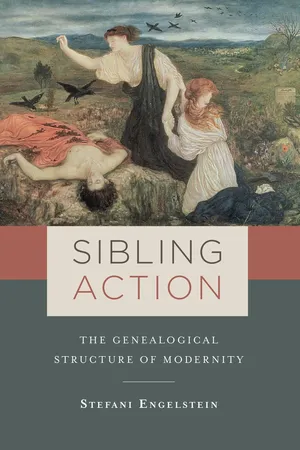Biological Sciences
The Tree of Life
"The Tree of Life" is a metaphorical representation of the evolutionary relationships among organisms. It illustrates the divergence and common ancestry of all living species, with branches representing different groups of organisms. This concept is fundamental to understanding the evolutionary history and biodiversity of life on Earth.
Written by Perlego with AI-assistance
Related key terms
4 Key excerpts on "The Tree of Life"
- eBook - ePub
Astrobiology
Understanding Life in the Universe
- Charles S. Cockell(Author)
- 2020(Publication Date)
- Wiley-Blackwell(Publisher)
taxon (plural taxa). This hierarchical classification of species has stood the test of time and is today the basis of our way of classifying species.8.4 The Tree of Life and Some Definitions
A tree of life is a diagram used to depict the evolutionary relationships between organisms. Some trees of life depict all three domains of life (Figure 8.3 ), but a phylogenetic tree can in principle contain any organisms of interest, from just a few species to many species across all three domains.Figure 8.3 shows a basic phylogenetic tree with some putative relationships between the three domains. Each line denotes an evolutionary “distance” between the groups shown, which reflects the time since they split from a common ancestor. There is no special significance to the groups shown. They merely illustrate some examples. You will notice that the tree is “rooted” in a single ancestor. This is generally called the Last Universal Common Ancestor or LUCA.What do phylogenetic trees show us? Phylogenetic trees show patterns of descent. In Figure 8.3 a you can see an example of another phylogenetic tree of large mammals. Let's examine this tree a little more. You'll notice that unlike the tree in Figure 8.3 , it is laid out with horizontal and vertical lines. This immediately shows us that phylogenetic relationships can be represented in different ways. The format shown in Figure 8.4 is typical. In this format, the horizontal lines or “branches” might correspond to the time since two groups or species diverged, or they could correspond to the amount of genetic change between different groups or species. The vertical lines in the tree represent branching into two new groups or species. The vertical line depicts a split at a node, which defines the point (the time) at which a cohesive population divided into two genetically distinct populations. These separations are caused by different effects. For example, two populations of the same organism might be isolated by a mountain range. Over time they diverge and become two different species in response to their different environments. A new forest might separate two groups of the same species inhabiting grassland, and they might evolve separately. The geographical separation of two populations that then evolve independently is called allopatric speciation. Alternatively, two populations might take up two different life styles in the same geographical location, which eventually leads to them becoming distinct species by evolution. This is called sympatric speciation - eBook - ePub
Eden's Endemics
Narratives of Biodiversity on Earth and Beyond
- Elizabeth Callaway(Author)
- 2020(Publication Date)
- University of Virginia Press(Publisher)
In the last decade, this endeavor to visualize vaster and vaster subsets of living organisms in evolutionary order by placing them together on one great tree of life has blossomed. There are now bird, mammal, crawfish, plant, dinosaur, and bacterial trees of life as well as comprehensive trees of life, one of which includes all 2.3 million named species. The resulting evolutionary diagrams are trees that encompass, constitute, and structure the world, organizing the relationships of constituent parts of life into a unified story of life on this planet. As Heather Houser has argued, “visualizations with an agenda centered on environmental issues invite questions from environmental critics about how their aesthetic features render visible and relevant the complexity of the phenomena that they depict.” 1 In this chapter I argue that while trees remain an exceptionally powerful tool for visualizing relationships, they perform a similar but opposite operation to the seed bank databases discussed in the previous chapter. Just as Svalbard and Kew’s apocalyptic model organized their vision of the world and the plants in it, evolutionary supertrees are framed around prolific propagation, which comes to determine the stories they are capable of depicting. This chapter finds the design of current evolutionary trees to be both remarkable presentations of vast swaths of life on Earth and limited in two ways. First, the circular construction, the decision to purge dead branches, and the treatment of time combine to ensure these trees are only capable of depicting life as wildly proliferating. Second, the trees and the related conception of organisms as representing “evolutionary history” not only evacuate biodiversity of its bodies but act as analgesics that position extinction as not a true and final loss of the essence of a species - eBook - ePub
Welcome to the Genome
A User's Guide to the Genetic Past, Present, and Future
- Robert DeSalle, Michael Yudell(Authors)
- 2020(Publication Date)
- Wiley-Blackwell(Publisher)
Although natural selection favors organisms and populations of organisms that are best suited for a particular environment, it is important to realize that the environment can change, suddenly rewriting the selection criteria. An asteroid can hit the Earth or an ice age can cover the planet. In either case, the rules of the game are now different: Species or individuals within a species best suited to survive in the new environment will thrive, and those formerly best suited to the environment will lose their advantage. Because this type of change takes place over such a protracted period—often millions of years—there is something almost unbelievable about evolution. The evolutionary clock ticks at a pace almost impossible for humans to comprehend. But when you begin to look at the ways in which many species resemble one another, at the evidence found in the fossil record, and at DNA extracted from both fossilized and living organisms and see genetic similarity across a wide range of species, the biological reality of evolution becomes obvious.The ability to compare and contrast genomes is an essential component of genomics. Thanks to new concepts and technical applications, this process is becoming faster and easier. One of the most important tools is what is known as the “tree of life”—a genealogy of life on Earth, both living and extinct. The tree, with a trunk representing ancestral characteristics, branches off into the different kingdoms of life and fills its branches with Earth’s rich diversity of plants, animals, and microorganisms. Looking at the tree you can see the evolutionary relationships among all living species and their extinct ancestors. (21 )The idea of organizing life on Earth by relatedness has a rich tradition. In the eighteenth century, the Swedish botanist Linnaeus organized all living species into a nonevolutionary semi‐hierarchical taxonomic scheme he called the Systema naturae. Life was organized into kingdoms, phyla, classes, orders, families, genera, and species. (22 ) In the Origin of Species Darwin integrated the Systema naturae with his theory of evolution in a tree of life that linked the evolutionary relationships of different species. (23 - eBook - ePub
Sibling Action
The Genealogical Structure of Modernity
- Stefani Engelstein(Author)
- 2017(Publication Date)
- Columbia University Press(Publisher)
fig. 4.14 ), accompanied by a single illustration, which firmly anchored the diagrammatic tree to evolutionary theory. The figure came to be known as The Tree of Life as a result of the following passage from the same chapter:The affinities of all the beings of the same class have sometimes been represented by a great tree. I believe this simile largely speaks the truth.… As buds give rise by growth to fresh buds, and these, if vigorous, branch out and overtop on all sides many a feebler branch, so by generation I believe it has been with the great Tree of Life, which fills with its dead and broken branches the crust of the earth, and covers the surface with its ever branching and beautiful ramifications.58It is noteworthy, however, that this passage does not mention the diagram. Darwin had already spent seven pages elucidating this figure, in the course of which he never once uses the word “tree.” In the past decade, several authors have pointed out the lack of illustrative correspondence between the figure and the discursive Tree of Life description, and one in particular, Horst Bredekamp (Darwins Korallen ), has argued that Darwin was far more drawn to the image of coral—which grows in multiple directions—than to that of the tree as an appropriate figure for his thought but reverted to the tree to help bolster his claim to priority after seeing Wallace’s tree diagram. In Darwin’s earlier sketched depictions, the pictorial directionality of the diversification was far more varied, even approaching the circular (fig. 4.15 ), and the natural phenomena represented appear more haphazard in their frequency and distribution.FIGURE 4.11 Jean-Baptiste de Lamarck, table showing the origin of the various animals, from Philosophie Zoologique
Learn about this page
Index pages curate the most relevant extracts from our library of academic textbooks. They’ve been created using an in-house natural language model (NLM), each adding context and meaning to key research topics.



